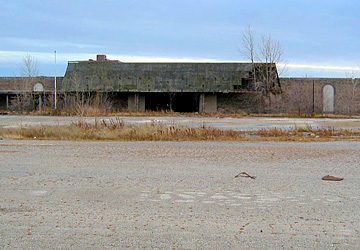Firm Suggests Model Legislation in Florida
Will Florida put the “suburban retrofitting” movement on the fast track?

Making it easier to do something about this.
Duany Plater-Zyberk & Co. (DPZ) is providing state officials with a legislative template to do just that. On April 20, the Miami-based design and planning firm submitted to Florida’s Division of Community Assistance a suggested draft for a State of Florida Sprawl Repair Act. It’s intent: To enable, among other things, “the retrofit of shopping malls and shopping centers into dense, walkable, mixed-use town centers.”
In an appendix, the document even provides a list of 48 enclosed shopping malls that may be ripe for retrofitting. The effort, says DPZ principal Galina Tahchieva, “is about stirring ideas about how to incentivize the private sector through easier permitting and infrastructure funding.” And the hope, of course, is that other states embrace similar initiatives.
“The repair, retrofit, and repurposing of commercial nodes — these malls and shopping centers — should be the first in a number of sprawl interventions,” says Tahchieva. That’s because they promise maximum bang for the investment buck.
“These nodes command the largest monetary and real estate investments in suburbia, and in most cases, they’re still under single ownership,” she says. What’s more, if dead or dying malls are redeveloped and intensified as complete town centers with residential and office components to supplement the retail, “transit between these intensified nodes will then start making sense.”
The next target, says Tahchieva, “should be the failing residential subdivisions. The choices are: evolution into mixed use neighborhoods, if they are lucky with location and have potential for intensification and leadership, or devolution, abandonment or conversion to park or agricultural land. The future growth of Florida is dependent on such actions.”
Tahchieva headed a DPZ design team that, during a February charrette in Atlanta, explored design alternatives for an out-of-date mall in the city’s northern ‘burbs. See our coverage here.
The broader retrofitting initiative is already influencing form-based coding efforts. The Center for Applied Transect Studies is working on a SmartCode module for suburban retrofitting – and, incidentally, for the emerging “agricultural urbanism” movement. See CATS’s new modules here.
— Ben Brown
 Over a decade ago Andrés Duany of DPZ taught me that, more times than not, NIMBY opposition stems from a sense that proposed development is not of equal or greater value to what would be lost.
Over a decade ago Andrés Duany of DPZ taught me that, more times than not, NIMBY opposition stems from a sense that proposed development is not of equal or greater value to what would be lost.
 Talk about geek love!
Talk about geek love! My lovely wife of eight years enjoys really bad television. For better or worse, last night she tricked me into watching a segment of ‘
My lovely wife of eight years enjoys really bad television. For better or worse, last night she tricked me into watching a segment of ‘ Just when reporters were beginning to buy into the hopefulness of “
Just when reporters were beginning to buy into the hopefulness of “








